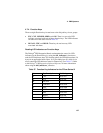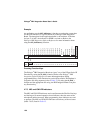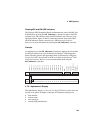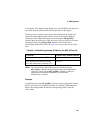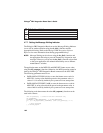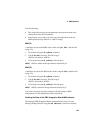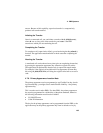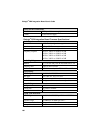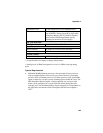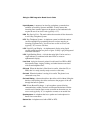4. PBX Systems
answer. Because of this capability, supervised transfer is a comparatively
preferred call transfer method.
Initiating the Transfer
Once in a connected call, you can initiate a transfer with dx_dial(&,<ext>),
where & acts as a key press of the transfer key and <ext> is the PBX
extension to which you are transferring the call.
Completing the Transfer
To complete a call (supervised or blind), go on-hook using the dx_sethook( )
function. The application must handle the on-hook state after completing the
transfer.
Aborting the Transfer
A transferred call can be aborted at any time (prior to completing the transfer)
by pressing the appropriate appearance key where the original call resides.
The application can perform this function only in supervised transfer mode.
For example, if the original call resided on the first appearance (Feature Key
00), using dx_dial(<ESC>KA) will bring the original caller back to an active
state.
4.7.9. Primary Appearance Location Note
The primary appearance can be programmed as any Flexible Line key, but for
logical uniformity, you might want to make Flexible Link Key 1 the primary
appearance key.
This is not the case for other PBXs. For other PBXs, the primary appearance
key must be programmed in a defined key of the phone emulated, otherwise
the following information would not be available:
• LC ON/OFF event
• Caller ID information
The key for the primary appearance can be programmed from the PBX, or the
application may set the primary appearance key from its default to a key by
165



